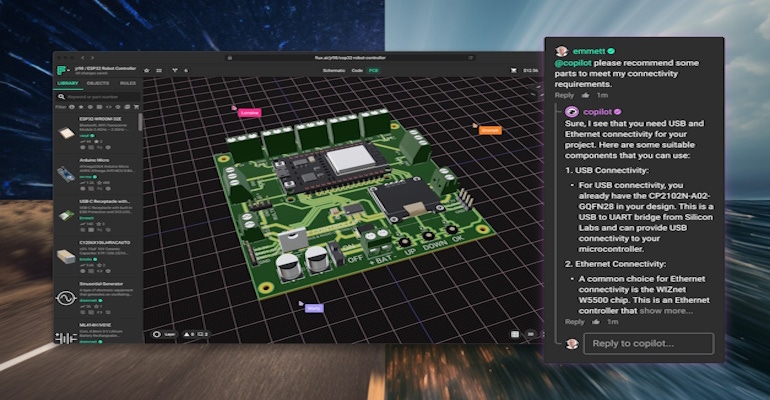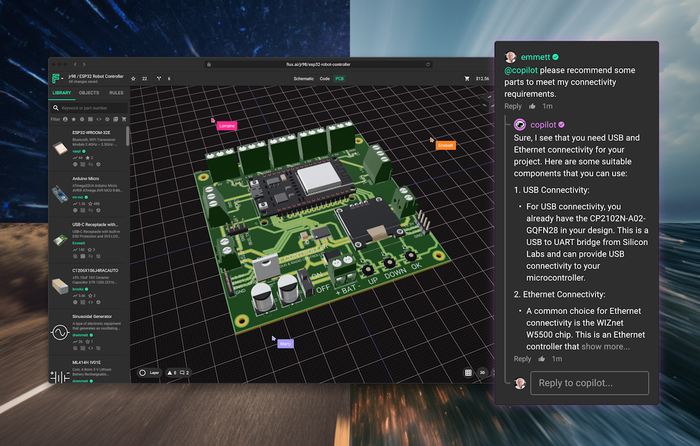Feel the Flux!
We are entering a new era of AI-powered PCB design and layout tools.
October 27, 2023

I was just thinking about the 1961 musical Stop the World—I Want to Get Off. I know it’s not particularly germane to this conversation, but it’s something that occasionally pops into (what I laughingly call) my mind when I start to feel a hint of a sniff of a whiff overwhelmed by new technological developments.
It’s not just that new technologies are appearing all the time these days. It’s also the fact that the rate of technology adoption is increasing. According to The Pace of Technology Adoption is Speeding Up by Rita McGrath, “it took 30 years for electricity and 25 years for telephones to reach 10% adoption but less than five years for tablet devices to achieve the 10% rate. It took an additional 39 years for telephones to reach 40% penetration and another 15 before they became ubiquitous. Smart phones, on the other hand, accomplished a 40% penetration rate in just 10 years [….]”
Think about the rate of adoption of artificial intelligence (AI) in general, and generative AI (GenAI) in particular. Take the GenAI known as ChatGPT from OpenAI as an example. This little scamp was formally launched on November 20, 2022, which is less than a year ago as I pen these words. Now, various flavors and incarnations of this little rascal are everywhere you look. As far as I’m concerned, the rate of uptake of this technology is nothing short of amazing.
We are all familiar with the little “Chat” windows that pop up on websites and cheerfully ask, “Do you have a question?” or “Can we help you?” It’s not so long ago that the entity on the other end of the chat was human (or French). That’s an increasingly rare occurrence these days because these duties have largely been adopted by GenAI-powered chatbots. Do you have your own personal or company website? Have you ever wondered how long it would take to set something like this up on your own site? I can answer this question. It will take less than 5 minutes if you use Chatsimple, which learns everything it needs by reading your website and any other documents you provide.
When it comes to engineering applications, let’s start by considering GitHub Copilot, for example. This little rascal, which was developed by GitHub and OpenAI, assists users in creating code. All sorts of code. From software developers using Python, JavaScript, TypeScript, Ruby, Go, C, C#, and C++ to hardware designers using Verilog and VHDL. In fact, GitHub Copilot is said to account for about 60% of newly developed code. On the one hand, it’s unfortunate that about 40% of the code generated by GitHub Copilot contains bugs and security vulnerabilities (it was largely trained on open-source software, and you get what you [don’t] pay for). On this other hand, this opens the door to Metabob, whose GenAI tool—which is also called Metabob—can detect and correct the bugs and security vulnerabilities introduced by both humans and GitHub Copilot.
Now, code is one thing, but I’m a hardware design engineer by trade. Over the course of my career, I’ve designed everything from ASICs to PCBs and from brainwave amplifiers to prognostication engines (don’t ask).
As the old saying goes: “It's tough to make predictions, especially about the future.” Bearing this in mind, if you had asked me little as six months ago, “Max, master of the mystic arts, when might we hope to see AI-powered PCB design and layout technology,” I would probably have replied, “It will come, grasshopper, it will come, but not for a few years yet.” So, I’m glad you didn’t ask, and I’m glad I didn’t answer, because—if I had—I would feel like a silly sausage because...
…this technology is currently leaping onto the center of the stage with a fanfare of sarrusophones (once heard, never forgotten). For example, the chaps and chapesses at Zuken have announced the introduction of AI-powered place-and-route within their flagship CR-8000 platform. Similarly, the lads and lasses at SnapEDA have renamed themselves SnapMagic, as part of which they are launching SnapMagic Copilot, which they describe as “The AI design partner that will change how every engineer designs electronics.”
I will be taking a deeper dive into those tools as soon as I get a spare moment. This far, however, the most impressive tool I’ve seen in this arena is the web-based schematic and PCB layout tool from Flux.ai with its integrated Flux Copilot. In addition to schematic and 2D layout, this also offers a 3D CAD view as illustrated below.

To be honest, words fail me as to everything this bodacious beauty can do. For example, you can enter something like “@copilot What are R1 and C2 doing in this circuit,” and it might reply along the lines, “These components are acting as a simple 1st order low-pass filter.”
One demo that completely blew me away was when they placed a microcontroller and a small liquid crystal display (LCD) module in the schematic and then asked Flux Copilot to read the data sheets for these two components and connect them up. I could barely believe my eyes when, just a few seconds later, the tracks started to appear along with feedback as to Copilot’s decision-making process. As I recall, it said something like, “There are three ways to connect these devices (1) using I2C, (2) using SPI, and (3) using many individual pins. I2C uses only 2 pins, but I opted for SPI which uses 4 pins but is much faster.”
“Good grief,” I thought to myself (or words to that effect).
I could waffle on for hours, but I think it would be more productive for us both to watch this short (3-minute) video on YouTube.
But wait, there’s more, because—while I was writing this column—I heard from the guys and gals at Flux, who tell me that they’ve just introduced something called “Flux for Organizations,” which boasts a bunch of collaboration features for companies, allowing you to do things like set up teams, grant (and revoke) different levels of permissions to individual team members, and establish corporate templates for all sorts of things.
I know what you’re thinking. Just how much does this sort of thing cost? Well, you can experiment with Flux and Flux Copilot for free (no download required), and you can keep on using it for free if you are a student or an educator. If you wish to move up to Flux Pro, which offers a cornucopia of additional features, then this will cost you a whopping $15 per user per month (you can obtain a 30% discount by paying yearly).
May I close by reminding us all once again that ChatGPT hit the scene less than 1 year ago at the time of this writing. Look how far it’s come! I’m almost frightened to think about what I’ll be writing next year. What say you? Do you have any thoughts you’d care to share on any of this?
About the Author(s)
You May Also Like


.jpg?width=300&auto=webp&quality=80&disable=upscale)


